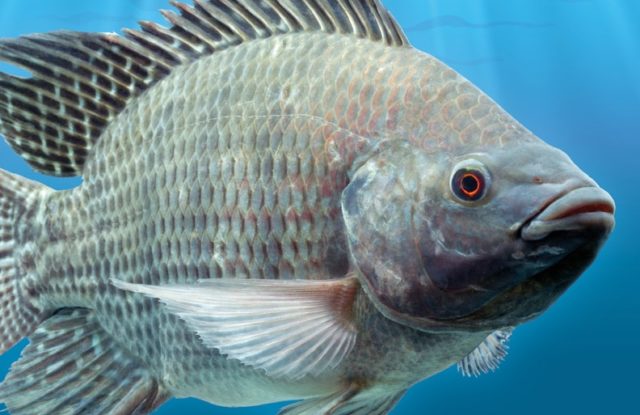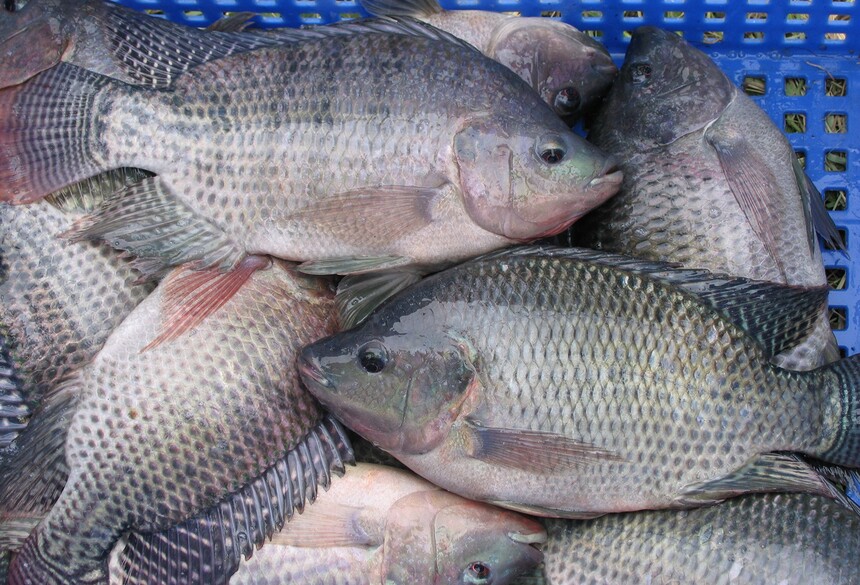|
China TilapiaTilapia is a tropical fish of the family Cichlidae, native to Africa. Due to its appearance being very similar to that of crucian carp, it is also known as "African crucian carp".
There are more than 600 species of tilapia globally, but some are "endangered organisms" with limited distribution. Most tilapia are now farmed worldwide, just like chickens, ducks, geese, pigs, cows, and sheep. In terms of fish production, when it comes to "toughness," there may be no fish more "tough" than tilapia, and perhaps no fish more "fierce" either. How "fierce" is tilapia? It's so "fierce" that it can even change its own gender. The success of tilapia in evolving from an "African niche fish" to one of the world's most important fish species is inseparable from four key words – "gender transformation."
China is a major global tilapia farming country, but not the world's largest consumer of tilapia. The primary consumption market for tilapia is the United States, to which China exports a large quantity of tilapia. In the 1990s, tilapia was rarely consumed in the United States or globally. This "crucian carp" from Africa was generally unpopular, and at that time, no one believed tilapia could become an "international fish" that would go global.
But when fortune comes, it cannot be stopped. At that time, the main consumed fish on American tables were white-fleshed fish, which were roughly divided into four categories: the first was true cod, the second was Alaska pollock, the third was catfish, and the fourth was tilapia. At that time, tilapia was more of a "cod substitute". Many middle-income Americans found that processed frozen tilapia fillets tasted very similar to cod, and tilapia was very cheap, so they began to eat this "fake cod" made from tilapia. After the 21st century, more and more people began to eat tilapia, forming a dietary habit, and tilapia gradually became popular in the United States. In many cases, food culture is like this: what starts as a cheap alternative eventually becomes a delicacy. Take pig intestines, for example—they were once eaten out of poverty, but now they are considered a gourmet food. The difference between pig intestines and tilapia is that pig intestines have become a luxury, more expensive than pork, while tilapia remains one of the cheapest fish.
First of all, the United States has very low domestic tilapia production, so it imports tilapia from China, Vietnam, and several South American countries every year. Among them, China is the main source of tilapia consumed in the United States. The large production of tilapia mainly stems from the fact that tilapia is simply an "Od Biao among fish" – it basically endures any hardship and keeps "persevering through hardships".
Tilapia's "hardiness" is reflected in two aspects. First, it is not picky about its habitat. Most fish are divided into marine fish and freshwater fish, with many marine fish unable to be farmed in freshwater and many freshwater fish unable to survive in seawater. However, tilapia is different – it thrives in both freshwater and seawater, showing no such selectivity. The optimal growth temperature for tilapia is 16–28°C, and it is highly tolerant of low oxygen levels. Its suffocation point in water is 0.07–0.23 mg/L, and it can still live and reproduce normally when dissolved oxygen in water reaches 1.6 mg/L. Therefore, tilapia can be farmed at extremely high densities.
Second, it is not picky about food. Take salmon as an example—even farmed salmon is expensive because it is a carnivorous fish, leading to high farming costs. Carnivorous fish are naturally "delicate." However, tilapia is different. As an omnivorous fish, it can eat both plants and animals, significantly reducing farming costs.
Rapid reproduction is another reason for tilapia's high yield. It is a classic example of a fish that spawns multiple times a year. While some fish spawn only once annually, tilapia spawns multiple times. In southern producing areas with suitable climates, tilapia can breed throughout the year, spawning several times annually. During summer and autumn, it can reproduce every 30 days, spawning 4 to 6 times a year.
Fast growth is the third reason for tilapia's high output. It takes only 150 to 200 days (varying with climate) for tilapia fry to grow into marketable fish, featuring an extremely rapid growth rate.
These factors have made tilapia one of the most suitable fish for "industrialized farming," with its yield leading that of other fish by an order of magnitude. No wonder it's called the "Od Biao of Fish"—tilapia is truly "remarkable" in boosting production. However, tilapia farming faces a challenge: female fish grow much slower and remain smaller than males. Thus, "male rate" is a key metric in tilapia aquaculture.
Tilapia's success is inseparable from "gender transformation". This fish has a unique trait: it is asexual in infancy. During the gender differentiation stage, juvenile tilapia choose their gender. Initially, scientists thought this choice was random, but later discovered it can be influenced by multiple factors. Since male tilapia grow faster, achieve larger sizes, and have higher commercial value, farmers have developed methods to directionally "transform" juvenile tilapia's gender—akin to performing a "gender reassignment surgery". These methods include pure physical, biological, and chemical approaches.
First, in breeding, specific crossbreeding can increase the male rate after gender differentiation. However, this varies significantly among tilapia species, leading to inconsistent results.
The second is the chemical method. In the past, before the gender differentiation of tilapia, steroidal drugs were sometimes used to treat the gonads of tilapia, so that tilapia that should not have differentiated into males could also become male tilapia.
The third is the physical method. Through high temperature, genetically female fish can be induced to become male fish. By controlling the temperature, tilapia that should have been female can also become male fish. These "gender reassignment surgeries" all force "genetically female fish" to become actual "male fish" through external manipulation.
In this way, the yield of tilapia is higher and the cost is lower, so that it can always maintain a low price. However, what should be said about these types of "gender reassignment surgeries"? Each has its own disadvantages. For example, regarding the use of drugs to change the gender of tilapia, some people have put forward different views, believing that excessive use of drugs is not conducive to the quality of tilapia. From being a substitute for cod to becoming the "Od Biao among fish", the past success of tilapia is inseparable from the discovery of fish "gender reassignment surgery"; its future success may be even more inseparable from the further development of fish "gender reassignment surgery".
|



